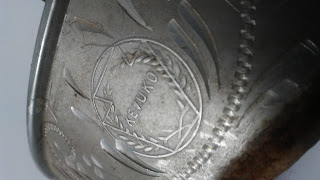I had to look up a podcast on this war since it didn't ring any of the handful of "History Facts" that still rattle around in my brain. Turns out, it was a pretty small war with pretty HUGE repercussions.
I'm no historian, but here's the gist.
In 1904, Japan had opened its borders after having completely shut down all trade and foreign visitors into and out of the country. Basically, after a regime change, they started trading, etc. and quickly got up to speed with modern weaponry (among other things) by making deals with allies.
Then, Russia comes along and wants to take part of Korea as its own because the Tsar was unpopular and needed a distraction. Japan didn't want all-out war with a huge super-power, and Russia knew it so they basically messed with the Japanese at the negotiating table.
Finally, Japan got tired of it and threw down by declaring war...three hours after bombing the Russian Fleet. Russia (and most of the world, quite frankly) thought that white people were so much better at war (add the fact that Japan was just a baby on the world stage) that the Japanese would have zero chance at winning. Japan won though, in a pretty big way (and only a year after the war started), and everyone kind of collectively gasped because it was the first time an Asian power won over a European power.
Now that you've got some basic background, let's rewind a bit and unpack that last bit.
People were extremely racist at the time these photo cards were made. That's pretty evident on some of them, so it's best to address it now. These cards that I'm sorting through and those who wrote the stories and dialogue on them are of a specific time and place. Ignoring their racism doesn't make it go away, so I'll point some of it out along the way.
Here's an example on the back of one of the cards from this set:
This sounds an awful lot like a racist way to justify the Japanese winning the war (despite the fact that trench warfare is NOT what won this war). Since it ended in 1905, and these cards seem to be from shortly thereafter, I'd wager that's the case.
The cards themselves are of various scenes of the war, totaling 6 in all, but oddly, they're all photos of Japanese soldiers. None are of Russian soldiers. They are copyrighted by the Keystone View Company. Some dated 1904, others 1905.
All have text on the back (as seen in the large image above), though not all of it is as racist as that example.
Overall, it's a pretty interesting group of pictures, especially considering that many believe this "minor" war set the stage for Japan's entry into World War II.









